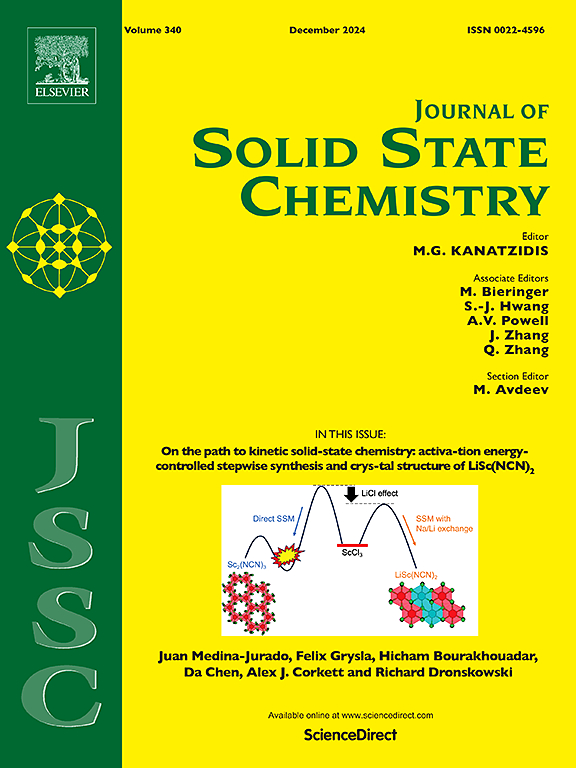Optimizing adding sequence of carbon black in solid-state synthesis of hierarchical TS-1 zeolite for efficient 1-hexene epoxidation
IF 3.2
3区 化学
Q2 CHEMISTRY, INORGANIC & NUCLEAR
引用次数: 0
Abstract
Epoxidation of olefin catalyzed by titanium silicalite-1 (TS-1) can obtain important intermediate epoxides of industrial production in a green and pollution-free manner. However, due the problem of macromolecules transport path restraint, which cause the catalyst to fail in lifetime and activity. Strategically, to increase the transport channel of macromolecules and shorten the transport path, it is necessary to introduce mesoporous structures into zeolite. Here, we report a solid-state synthesis of hierarchical TS-1 zeolite by optimizing carbon black sequence. The texture property of hierarchical TS-1 can be optimized by carbon black. Most importantly, the addition sequence of carbon black can impact the porosity of hierarchical TS-1. The hierarchical zeolite is synthesized by incorporating 0.2 g carbon black into the seeds. When carbon black is firstly combined with seeds, the enhanced interaction facilitates the subsequent growth process, leading to large surface area from mesopores (121 m2/g) and abundant pores size (8–40 nm) and enhanced exposure of Ti active sites. The optimized hierarchical TS-1 possesses excellent catalytic performance with high conversion rate (24.4 %) and similar selectivity (93.8 %), which are 1.6 times higher than that of traditional TS-1 zeolites.

求助全文
约1分钟内获得全文
求助全文
来源期刊

Journal of Solid State Chemistry
化学-无机化学与核化学
CiteScore
6.00
自引率
9.10%
发文量
848
审稿时长
25 days
期刊介绍:
Covering major developments in the field of solid state chemistry and related areas such as ceramics and amorphous materials, the Journal of Solid State Chemistry features studies of chemical, structural, thermodynamic, electronic, magnetic, and optical properties and processes in solids.
 求助内容:
求助内容: 应助结果提醒方式:
应助结果提醒方式:


